Rob Bignell's Blog, page 280
November 7, 2015
Writing Inspiration: Establish milestones
Establishing 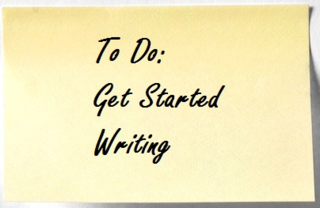 milestones is another way to make progress on your book. For example, if you write an average of 1000 words a day, and a chapter in your book is about 5000 words long, in five days you should complete a chapter. Add some leeway ��� say a couple of days ��� to cover holidays, personal illnesses and emergencies.
milestones is another way to make progress on your book. For example, if you write an average of 1000 words a day, and a chapter in your book is about 5000 words long, in five days you should complete a chapter. Add some leeway ��� say a couple of days ��� to cover holidays, personal illnesses and emergencies.
Your first milestone, reachable one week from today, will be the completion of a chapter. Two weeks from today, you will reach the milestone of completing the second chapter. If you miss a milestone, you must write for a longer period of time during the following week to reach it and to make the next one.
Need an editor? Having your book, business document or academic paper proofread or edited before submitting it can prove invaluable. In an economic climate where you face heavy competition, your writing needs a second eye to give you the edge. Whether you come from a big city like Indianapolis, Indiana, or a small town like Monkey's Eyebrow, Kentucky, I can provide that second eye.
<A HREF="http://ws-na.amazon-adsystem.com/widg... Widgets</A>Related articles
 Read article, chapter on topic in your book
Read article, chapter on topic in your book Writing Inspiration: The amount of writing I have done and my skill as a writer grows every day.
Writing Inspiration: The amount of writing I have done and my skill as a writer grows every day. Writing prompt: Sensuous dissection
Writing prompt: Sensuous dissection
November 5, 2015
12 tips for revising your own manuscript
During the 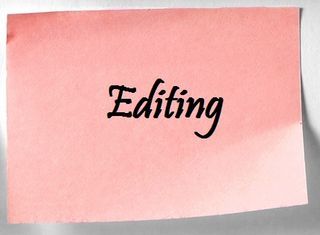 process of writing your novel or nonfiction book, you���ll probably spend a lot of time revising the manuscript. Catching every error in one reading is unlikely, but you can reduce the number of drafts you eventually write simply by following some editing tricks. Here are some common ones used by writers and editors alike.
process of writing your novel or nonfiction book, you���ll probably spend a lot of time revising the manuscript. Catching every error in one reading is unlikely, but you can reduce the number of drafts you eventually write simply by following some editing tricks. Here are some common ones used by writers and editors alike.
Before you read
��� Set aside the draft ��� Let a couple of days pass between the writing and the editing. This helps ���distance��� you from the writing process so that you can look at the piece more objectively.
��� Reacquaint yourself with writing craftsmanship ��� While waiting to edit, read a book about the craft of writing. Doing so will give you some ideas of what to look for when editing as well as some solutions for how to solve the issue.
��� Turn off the distractions ��� Turn off the television, email and music with lyrics then read the manuscript in a place where no one will interrupt you.
Editing strategies
��� Switch to paper ��� People read words on a computer screen slightly differently than they do words on paper. Editing a printout of your manuscript can help you spot errors you might have missed by editing onscreen.
��� Read the manuscript aloud ��� When you have difficulty saying a sentence aloud, others likely will have difficulty reading it. Reading aloud also forces you to go slower, increasing your chances of catching errors.
��� Look up from the manuscript ��� Every page or so, take your eyes off the screen or printout, otherwise you run the risk of glazing over what you���re reading.
��� Use spell and grammar check ��� While you never should rely solely on spell check to proofread your piece, don���t disregard the tool either. It can find typos that will have you slapping your head wondering how they got past you.
What to look for
��� Watch for words used too many times ��� Any time a word is repeated within a sentence and in consecutive sentences, you probably need to rework the passage.
��� Seek and destroy adverbs ��� Words ending in ���ly��� usually can be dumped. Use a stronger verb to get your idea across.
��� Use active voice ��� While not every sentence needs to be in active voice, passive voice generally is overused in early drafts.
��� Ask ���What is ���it���?��� ��� Do you know what ���it��� refers to (its antecedent) in a sentence? Often writers unconsciously use ���it��� to quick write a sentence so they can keep up with their own thoughts of what the next sentences should say.
��� Identify point of view shifts ��� This mainly applies to fiction. Like passive voice, jarring point of view shifts are common in early drafts. Fix them early in the process to save a lot of rewriting later.
Need an editor? Having your book, business document or academic paper proofread or edited before submitting it can prove invaluable. In an economic climate where you face heavy competition, your writing needs a second eye to give you the edge. Whether you come from a big city like Denver, Colorado, or a small town like Dewey Beach, Delaware, I can provide that second eye.
<A HREF="http://ws-na.amazon-adsystem.com/widg... Widgets</A>Related articles
 Writing Inspiration: Go off the grid
Writing Inspiration: Go off the grid Self-publishing tip: Give yourself an editor
Self-publishing tip: Give yourself an editor Skip headers, footers, page numbers in ebook
Skip headers, footers, page numbers in ebook
November 4, 2015
What on Earth? Maddenly vs. maddeningly
Here are 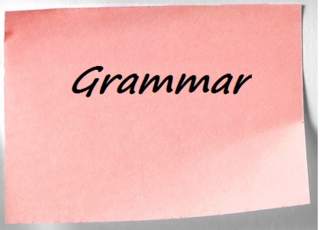 two works that drive writers crazy: maddenly vs. maddeningly.
two works that drive writers crazy: maddenly vs. maddeningly.
Maddeningly means extremely annoying or exasperating, as in The traffic in downtown Los Angeles was maddeningly slow.
Maddenly is not a word. It likely appears in manuscripts because the writer is mishearing the word, which is easy to do in this case. The situation is confounded (infuriatingly so) because madden, meaning to make or become mad, is a word.
So just take a deep breath, count to 10, and if using an adverb don���t forget to also add ���ing��� to madden.
Need an editor? Having your book, business document or academic paper proofread or edited before submitting it can prove invaluable. In an economic climate where you face heavy competition, your writing needs a second eye to give you the edge. Whether you come from a big city like Baltimore, Maryland, or if you come from a small town like Giants Neck, Connecticut, I can provide that second eye.
<A HREF="http://ws-na.amazon-adsystem.com/widg... Widgets</A>Related articles
 Five Great Quotations about the Writing Process
Five Great Quotations about the Writing Process Writing Inspiration: Seek another's advice
Writing Inspiration: Seek another's advice Make tables readable in your self-published book
Make tables readable in your self-published book
November 3, 2015
Writing Prompt: Out-of-place character
Suffering 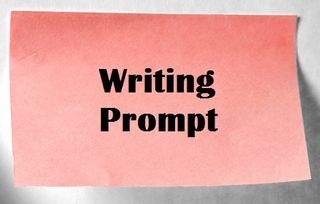 from writer���s block or need to add some spunk to your writing? The problem may be that you need to change up your routine.
from writer���s block or need to add some spunk to your writing? The problem may be that you need to change up your routine.
To that end, try this tip: Place a person you know in a different setting. For example, relocate an urbanite on a Southern farm or a school janitor in a corner office of a high-tech firm. How does their lifestyle and view on life change? You now have a character and a setting. Next, imagine that a problem occurs, upsetting their routine. You now have a plot.
Need an editor? Having your book, business document or academic paper proofread or edited before submitting it can prove invaluable. In an economic climate where you face heavy competition, your writing needs a second eye to give you the edge. Whether you come from a big city like Houston, Texas, or a small town like Chicken, Alaska, I can provide that second eye.
&amp;amp;amp;amp;amp;lt;A HREF="http://ws-na.amazon-adsystem.com/widg... Widgets&amp;amp;amp;amp;amp;lt;/A&amp;amp;amp;amp;amp;gt;Related articles
 Five Great Quotations about the Writing Process
Five Great Quotations about the Writing Process Writing Inspiration: Seek another's advice
Writing Inspiration: Seek another's advice Make tables readable in your self-published book
Make tables readable in your self-published book
November 2, 2015
Avoid reader confusion by anchoring story
Readers 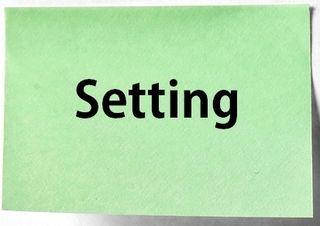 beginning a story need to know where and when the tale occurs. This establishment of the story���s place and time in the first few paragraphs of the story sometimes is referred to as anchoring.
beginning a story need to know where and when the tale occurs. This establishment of the story���s place and time in the first few paragraphs of the story sometimes is referred to as anchoring.
Without such anchoring, most readers will imagine that the story occurs in a different place and time than the author intended. This can lead to confusion later in the story when the author provides details that conflict with this imagined anchor. Or worse, without such anchoring, the reader will be disoriented from the start (Of course, such disorientation may be intentional ��� for example, if the main character has amnesia ��� but this strategy only works for a fraction of all tales written.).
The author need not get too specific about the place and time. That the story occurs in a large city probably is more important to know than giving the exact metropolis. In fact, giving the city���s name can be limiting as the author now must give details specific to that community. That the story occurs in the future is more important to know than giving the exact year. Indeed, in stories written during the 20th century that were set in the then far-off future year of ���1999��� are now out of date.
In addition, the author should avoid using exposition to provide the place and time. For example, rather than telling ���It was noon in a summer day in the city��� show it by writing ���The glare of the sun directly overhead left every driver in the traffic jam worried about their car overheating from the air conditioner set on full blast.��� The latter infers that it���s the lunch hour on a hot day in a metro area.
Need an editor? Having your book, business document or academic paper proofread or edited before submitting it can prove invaluable. In an economic climate where you face heavy competition, your writing needs a second eye to give you the edge. Whether you come from a big city like St. Louis, Missouri, or a small town like Cheesequake, New Jersey, I can provide that second eye.
&amp;lt;A HREF="http://ws-na.amazon-adsystem.com/widg... Widgets&amp;lt;/A&amp;gt;Related articles
 Writing Inspiration: Seek another's advice
Writing Inspiration: Seek another's advice Five Great Quotations about the Writing Process
Five Great Quotations about the Writing Process Make tables readable in your self-published book
Make tables readable in your self-published book
November 1, 2015
Five Great Quotations about Passion for Writing
���No tears 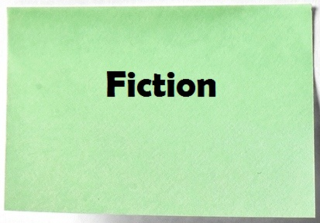 in the writer, no tears in the reader.��� - George Moore
in the writer, no tears in the reader.��� - George Moore
���There is no greater agony than bearing an untold story inside you.��� - Maya Angelou
���Writing is the only thing that when I do it, I don't fell I should be doing something else.��� - Gloria Steinem
���Writing a book is a horrible, exhausting struggle, like a long bout with some painful illness. One would never undertake such a thing if one were not driven on by some demon whom one can neither resist nor understand.��� - George Orwell
���Writing's like running downhill; can't stop if you want to.��� - Hilary Mantel
Need an editor? Having your book, business document or academic paper proofread or edited before submitting it can prove invaluable. In an economic climate where you face heavy competition, your writing needs a second eye to give you the edge. Whether you come from a big city like San Diego, California, or a small town like Eek, Arkansas, I can provide that second eye.
&amp;amp;amp;amp;lt;A HREF="http://ws-na.amazon-adsystem.com/widg... Widgets&amp;amp;amp;amp;lt;/A&amp;amp;amp;amp;gt;Related articles
 Writing Inspiration: Seek another's advice
Writing Inspiration: Seek another's advice Five Great Quotations about the Writing Process
Five Great Quotations about the Writing Process Make tables readable in your self-published book
Make tables readable in your self-published book
October 31, 2015
Writing Inspiration: Get into the zone
Lose yourself 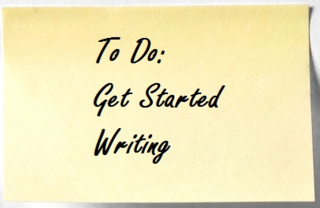 in the momentum of your writing. Turn off the automatic spell checker and your inner self-critic and allow yourself to simply write. After you���ve finished writing, you���ll likely find that your paragraph or scene is better than you initially thought.
in the momentum of your writing. Turn off the automatic spell checker and your inner self-critic and allow yourself to simply write. After you���ve finished writing, you���ll likely find that your paragraph or scene is better than you initially thought.
Need an editor? Having your book, business document or academic paper proofread or edited before submitting it can prove invaluable. In an economic climate where you face heavy competition, your writing needs a second eye to give you the edge. Whether you come from a big city like Youngstown, Ohio, or a small town like Hogshooter, Oklahoma, I can provide that second eye.
<A HREF="http://ws-na.amazon-adsystem.com/widg... Widgets</A>Related articles
 Five Great Quotations about the Writing Process
Five Great Quotations about the Writing Process Writing Inspiration: Seek another's advice
Writing Inspiration: Seek another's advice Make tables readable in your self-published book
Make tables readable in your self-published book
October 30, 2015
Ask at end of your book for a review
One of  the best ways to encourage people to buy your book is by having others speak highly of it, especially on a web page where a person can make a purchase. Amazon.com and other bookselling websites know this and so allow reviews to be posted on pages that hawk books. The challenge then facing authors is to get people to post reviews on that web page.
the best ways to encourage people to buy your book is by having others speak highly of it, especially on a web page where a person can make a purchase. Amazon.com and other bookselling websites know this and so allow reviews to be posted on pages that hawk books. The challenge then facing authors is to get people to post reviews on that web page.
A good way to do that is to encourage people who���ve read your read to write and post a few positive words. After all, if someone has made it all the way through your book, they probably enjoyed it. So a good spot to make such a request is after the last page of your book.
The request need not be anything long or complex. A simple, direct sentence will do:
If you enjoyed this book, please take a few moments to write a review of it. Thank you!
Be sure to include the URL where the post can be made; in the ebook version of your book, include an actual link to that page.
While there���s always a chance that someone might pen a negative review, the odds are against it. Someone who disliked your book gave up on it long before reaching the page requesting a review. In addition, most people who post reviews do so because the book in some way positively affected them. Regardless, the more reviews you receive for your book the better. A total of 50 positive and 5 negative reviews will benefit your book sales more than 5 positive and 1 negative reviews, even though you received more bad ones.
Need an editor? Having your book, business document or academic paper proofread or edited before submitting it can prove invaluable. In an economic climate where you face heavy competition, your writing needs a second eye to give you the edge. Whether you come from a big city like San Diego, California, or a small town like Eek, Arkansas, I can provide that second eye.
<A HREF="http://ws-na.amazon-adsystem.com/widg... Widgets</A>Related articles
 Five Great Quotations about the Writing Process
Five Great Quotations about the Writing Process Writing Inspiration: Seek another's advice
Writing Inspiration: Seek another's advice Make tables readable in your self-published book
Make tables readable in your self-published book
October 29, 2015
Four main ways exist to present your ebook
Most of us 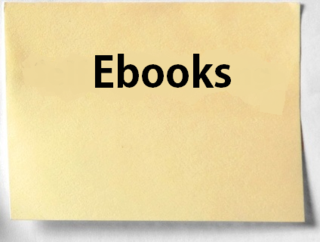 know what an ebook is ��� it���s text structured like a paper book that is presented to us digitally, similar to the way that a web page appears in that the text appears on a screen. From there, though, an understanding of the terminology and of how an ebook works or is presented typically takes a sharp downward turn among authors. Yet, knowing that information can help authors make better decisions when self-publishing.
know what an ebook is ��� it���s text structured like a paper book that is presented to us digitally, similar to the way that a web page appears in that the text appears on a screen. From there, though, an understanding of the terminology and of how an ebook works or is presented typically takes a sharp downward turn among authors. Yet, knowing that information can help authors make better decisions when self-publishing.
Among the important concepts to know are the various ways that an ebook can be presented to readers. There are fair major formats ��� PDF, Epub, Mobi and AZW.
Long before there were ereaders, tablets and Smartphones, authors distributed ebooks via PDF, or a Portable Document Format. This is a fixed version of what appears like sheets of paper that can be seen on laptops and other computers. Often when creating either a paperback or an ebook, the author must convert their MS Word document into a PDF, which then is uploaded at a website to the ebook���s printer or distributor.
An alternative to the PDF is the Epub, or electronic publication. The Epub is an international standard used by ebook vendors to display text and photos on a screen. Nearly 300 ebook vendors use Epub, most notably Apple���s iBooks and Barnes & Noble���s Nook.
Amazon.com and its division, Kindle, do not use Epub to display text and photos but a version of Mobi, a standard that once was used by the Mobipocket eBook. Technically, the Kindle uses AZW, or Amazon Whispernet, but many often say that Kindle uses Mobi. That���s because the only difference between AZW and Mobi is the former uses DRM, or Digital Rights Management, which includes access controls limiting use of the text and the devices it���s being read on.
An ebook can be designed in MS Word that can be converted to both Epub and the Mobi/AZW formats. Typically, the MS Word file goes through what is called nicknamed a ���meat grinder��� at a vendor (such a Kindle DP or Smashwords) that converts the MS Word document (or the PDF that the MS Word was converted to) into an Epub or a Mobi/AZW file that then can be read on ereaders, tablets, mobile phones, laptops, desktops and so on.
Need an editor? Having your book, business document or academic paper proofread or edited before submitting it can prove invaluable. In an economic climate where you face heavy competition, your writing needs a second eye to give you the edge. Whether you come from a big city like Phoenix, Arizona, or a small town like Last Chance, Idaho, I can provide that second eye.
&lt;A HREF="http://ws-na.amazon-adsystem.com/widg... Widgets&lt;/A&gt;Related articles
 Five Great Quotations about the Writing Process
Five Great Quotations about the Writing Process Writing Inspiration: Seek another's advice
Writing Inspiration: Seek another's advice Make tables readable in your self-published book
Make tables readable in your self-published book
October 28, 2015
Grammar tip: Groundbreaking vs. ground breaking vs. ground-breaking
Here���s an 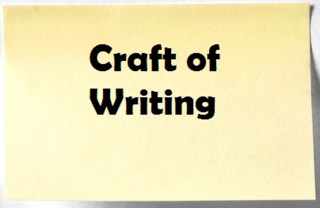 old grammar controversy that���s easy to deconstruct.
old grammar controversy that���s easy to deconstruct.
The older you are, the more likely your junior high school teacher pounded into you that ground breaking and ground-breaking were the correct spellings when referring to the start of a construction project. These days, however, groundbreaking is far more prevalent, and both Merriam-Webster and Oxford Dictionaries consider it the correct spelling. This is the same spelling that���s used for the traditional definition of the word meaning ���new and revolutionary��� as in The scientist���s proposed theory was groundbreaking.
Ground breaking is still used, though its meaning generally is more literal, as in actually cracking the ground open, like Thor smashed his hammer in a ground breaking smash.
Need an editor? Having your book, business document or academic paper proofread or edited before submitting it can prove invaluable. In an economic climate where you face heavy competition, your writing needs a second eye to give you the edge. Whether you come from a big city like Seattle, Washington, or a small town like Uncertain, Texas, I can provide that second eye.
&lt;A HREF="http://ws-na.amazon-adsystem.com/widg... Widgets&lt;/A&gt;Related articles
 Five Great Quotations about the Writing Process
Five Great Quotations about the Writing Process Writing Inspiration: Seek another's advice
Writing Inspiration: Seek another's advice Make tables readable in your self-published book
Make tables readable in your self-published book



